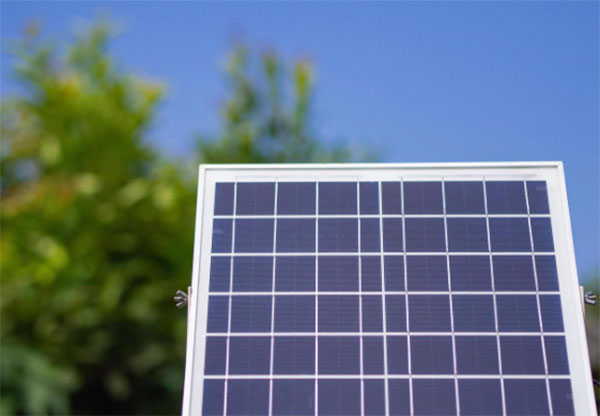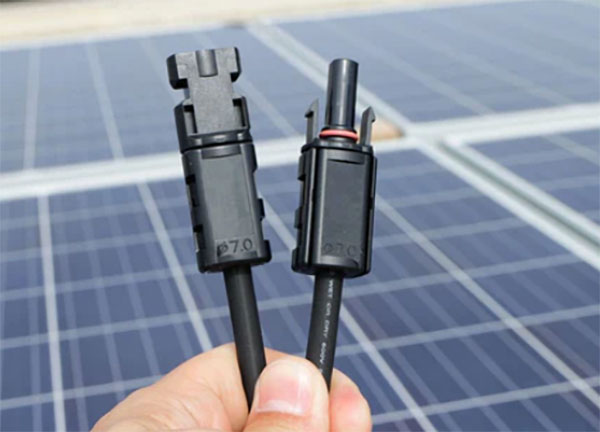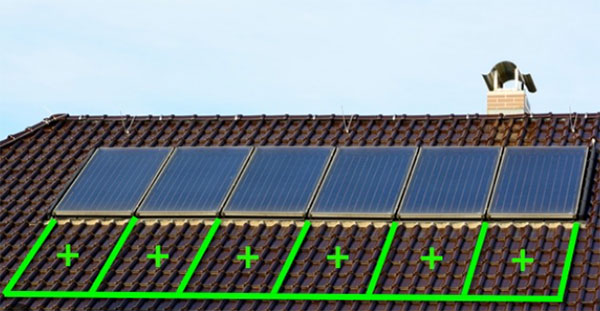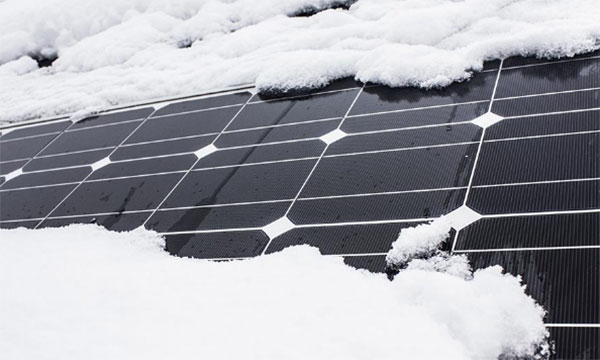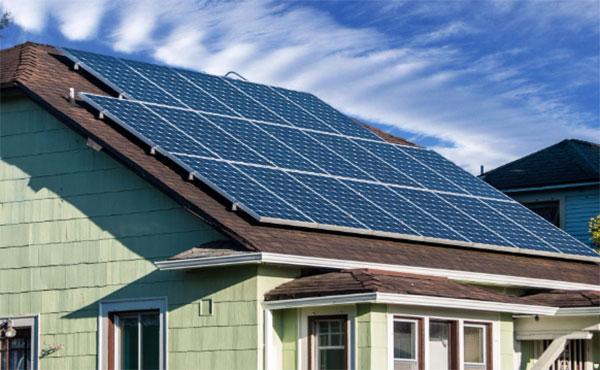Description
Yes, you can connect solar panels of different wattages together, but it requires careful planning and optimization to ensure system efficiency.
Understanding Solar Panel Wattage
Solar panel wattage refers to the power output of a solar panel under ideal conditions, measured in watts (W). This figure is crucial as it directly impacts the efficiency, cost, and size of solar power systems.Definition of Solar Panel Wattage
Solar panel wattage is determined by multiplying the solar panel's voltage (V) by its current (amps, A). For example, a panel producing 18 volts at 5.55 amps would have a wattage of approximately 100W. This measure dictates how much power a single panel can produce in optimal sunlight conditions.Importance of Wattage in Solar Panel Systems
- Determines System Size and Cost: The wattage of individual panels plays a significant role in calculating the total number of panels needed for a system. Higher wattage panels can lead to fewer panels required, potentially reducing installation space and costs. For instance, a system needing 5kW of power could use 20 panels of 250W or 16 panels of 312W, affecting both the system's footprint and initial investment.
- Efficiency and Performance: Higher wattage panels are often more efficient, converting more sunlight into electricity. This efficiency can be crucial for maximizing power generation in limited spaces. For example, panels with efficiencies of 20% or more, such as those exceeding 300W, are ideal for rooftops where space is at a premium.
- Impact on Longevity and Value: Panels with higher wattage and efficiency typically utilize better materials and technology, potentially increasing their lifespan and performance over time. A panel's longevity, often ranging from 25 to 30 years, directly influences the system's overall value, with higher wattage panels offering better long-term returns.
- Cost Considerations: While higher wattage panels might have a higher upfront cost, their efficiency and the reduced number of panels needed can offset this over time. For instance, the price per watt can range from $0.70 to $1.50, influenced by the panel's technology and efficiency.
Compatibility of Solar Panels with Different Wattages
When integrating solar panels with varying wattages into a single system, understanding the compatibility and how it impacts system efficiency is crucial. This section delves into the factors that influence compatibility and the resultant effects on system performance.Factors Affecting Compatibility
Voltage and Current Characteristics: The voltage (V) and current (I) characteristics of solar panels play a pivotal role in determining compatibility. Panels with drastically different voltages or current outputs can lead to inefficiencies when connected, as the system has to operate at the parameters of the lowest performing panel. Solar Panel Quality and Material: The quality and material of the solar panels are also significant. Panels made from monocrystalline silicon tend to have higher efficiency and longevity compared to polycrystalline silicon panels. However, they come at a higher cost, with monocrystalline panels costing approximately 20% more than their polycrystalline counterparts. Maximum Power Point Tracking (MPPT): Charge controllers with MPPT technology can significantly enhance the compatibility of panels with different wattages by optimizing the power output from each panel individually. This technology ensures that even with mixed wattage panels, the system can operate close to its maximum efficiency.Impact on System Efficiency
Reduced Overall Efficiency: Connecting panels with different wattages without proper optimization can lead to a reduction in system efficiency. For instance, if a 250W panel is connected in series with a 200W panel, the system's output may be limited by the lower wattage panel, reducing the overall efficiency. Increased Complexity and Cost: To mitigate the efficiency loss, additional components such as MPPT charge controllers or separate inverters might be necessary, which can increase the cost and complexity of the solar power system. The price of an MPPT charge controller can range from $100 to over $600, depending on the system size and specifications. Optimization Strategies: Utilizing parallel connections for panels of different wattages can help maintain higher efficiency levels by allowing each panel to operate at its optimal voltage and current. However, this requires careful planning and potentially additional cabling and isolation diodes, which can add to the cost and complexity of installation.Wiring Configurations for Solar Panels
Understanding the wiring configurations for solar panels is essential for designing an efficient and cost-effective solar power system. This section explores the differences between series and parallel connections and provides guidance on connecting panels with different wattages.Series vs. Parallel Connections
Series Connections: In a series connection, solar panels are connected end-to-end, resulting in a cumulative increase in voltage while the current remains constant. This configuration is ideal for systems where the input voltage requirement of the inverter is higher than the voltage of a single panel. However, the major downside is that the entire system's performance can be compromised by the shading or malfunctioning of a single panel. For example, connecting four 100W panels with a voltage of 5V each in series would yield a system voltage of 20V and a current equal to one panel's output. Parallel Connections: Parallel connections involve connecting the positive terminals of all panels together and all the negative terminals together, increasing the current while keeping the voltage constant. This setup is beneficial when the system requires a higher current, and it is less susceptible to the shading problem. However, it may require thicker cables to handle the increased current, leading to higher costs. Using the same panels from the series example in a parallel configuration would give a system current four times that of a single panel, with the voltage remaining at 5V.How to Connect Different Wattage Panels
Combining Series and Parallel: To optimize efficiency and accommodate different wattages, a combination of series and parallel connections can be used. For instance, panels of the same wattage can be connected in series to form a 'string,' and then multiple strings can be connected in parallel. This approach balances the voltage and current across the system, but it requires careful planning and possibly the use of MPPT technology to maximize output from each string. Impact on Efficiency and Cost: The choice between series and parallel (or a combination) affects the system's overall efficiency and cost. Series connections can lead to efficiency losses due to partial shading, while parallel connections may require more expensive, larger gauge wiring. MPPT charge controllers, which can significantly improve efficiency in mixed configurations, add to the cost but can optimize power generation, making them a worthwhile investment for complex systems.Optimizing Solar Panel Systems with Mixed Wattages
Creating an efficient solar panel system with mixed wattages requires a strategic approach to balance voltage and current, alongside the intelligent use of solar charge controllers. Here, we detail the methods and considerations for maximizing system efficiency.Balancing Voltage and Current for Maximum Efficiency
- Utilizing MPPT Charge Controllers: Maximum Power Point Tracking (MPPT) charge controllers adjust their input to harvest the maximum power from the solar panels, regardless of the sunlight's intensity or the panels' conditions. This is crucial for systems with panels of varying wattages, as MPPT can optimize each panel's performance.
- Designing with Compatibility in Mind: When combining panels of different wattages, ensure that their voltage ratings are compatible. For instance, a panel with a nominal voltage of 12V (ranging from 17V to 22V in operation) can be paired with panels within this voltage range to minimize efficiency loss.
- Implementing Parallel Connections for Current Balancing: In cases where panels have significantly different current outputs, connecting them in parallel can help balance the system's overall current, ensuring that each panel contributes optimally to the system's output.
Role of Solar Charge Controllers
- Preventing Overcharge and Extending Battery Life: Charge controllers protect the battery from being overcharged by regulating the voltage and current flowing into the battery. This extends the battery's lifespan and maintains the system's efficiency, especially critical in mixed wattage systems where the power output can vary widely.
- Enhancing Efficiency with Proper Selection: Choosing the right charge controller PWM (Pulse Width Modulation) for simpler, smaller setups, and MPPT for larger, more complex systems can significantly affect the system's efficiency. For example, MPPT controllers can improve efficiency by up to 30% compared to PWM in varied lighting conditions.
- Cost Consideration: While MPPT charge controllers offer superior performance, they come at a higher price point. A high-quality MPPT controller can cost between $200 to $600, depending on its capacity and features. This investment is justified by the increase in system efficiency and the potential for greater energy harvest over time.
- Boldly assess each panel's voltage and current specifications when designing a mixed wattage system to ensure optimal compatibility and efficiency.
- The choice between PWM and MPPT charge controllers should be based on the system's complexity and budget, with MPPT being the preferred option for maximizing the output of mixed wattage solar panels.
- Regular system monitoring and maintenance are essential for sustaining high efficiency, as even well-designed systems can experience performance drops due to environmental factors or component aging.
Monitoring and Maintenance of Mixed Wattage Systems
Ensuring the longevity and efficiency of solar panel systems with mixed wattages involves diligent monitoring and maintenance. This section outlines key techniques and tips for keeping your system at peak performance.Techniques for Monitoring System Performance
- Use of Smart Monitoring Systems: Advanced solar monitoring systems can track the performance of each panel individually, allowing for real-time adjustments and troubleshooting. These systems can alert you to issues such as reduced output due to shading or panel degradation.
- Regular Performance Checks: Conducting periodic checks to compare the system's actual output against expected performance metrics can help identify inefficiencies. For example, a 250W panel operating below 80% of its expected output might indicate a need for maintenance or replacement.
- Implementing IoT Solutions: Internet of Things (IoT) devices can be integrated into solar systems to provide detailed analytics on energy production, consumption, and system health, offering insights into areas for improvement.
Maintenance Tips for Longevity and Efficiency
- Cleaning Solar Panels Regularly: Accumulation of dust, leaves, or snow can significantly reduce panel efficiency. Regular cleaning, especially after storms or during pollen seasons, can maintain optimal performance. For instance, cleaning panels can increase their efficiency by up to 5%, depending on the environment.
- Inspecting and Tightening Connections: Loose wiring or corroded connections can lead to power losses. Annual inspections and tightening of connections ensure that the system operates smoothly, preventing unnecessary efficiency drops.
- Updating System Components: As solar technology advances, upgrading components such as inverters or charge controllers to more efficient models can boost the entire system's performance. For example, replacing a PWM controller with an MPPT controller can improve system efficiency by up to 30%.
- Scheduled Professional Inspections: Having a professional inspect the system annually can help identify issues that may not be obvious to the untrained eye. This can include checking for damaged panels, ensuring mounting hardware is secure, and verifying that the system's grounding is intact.

